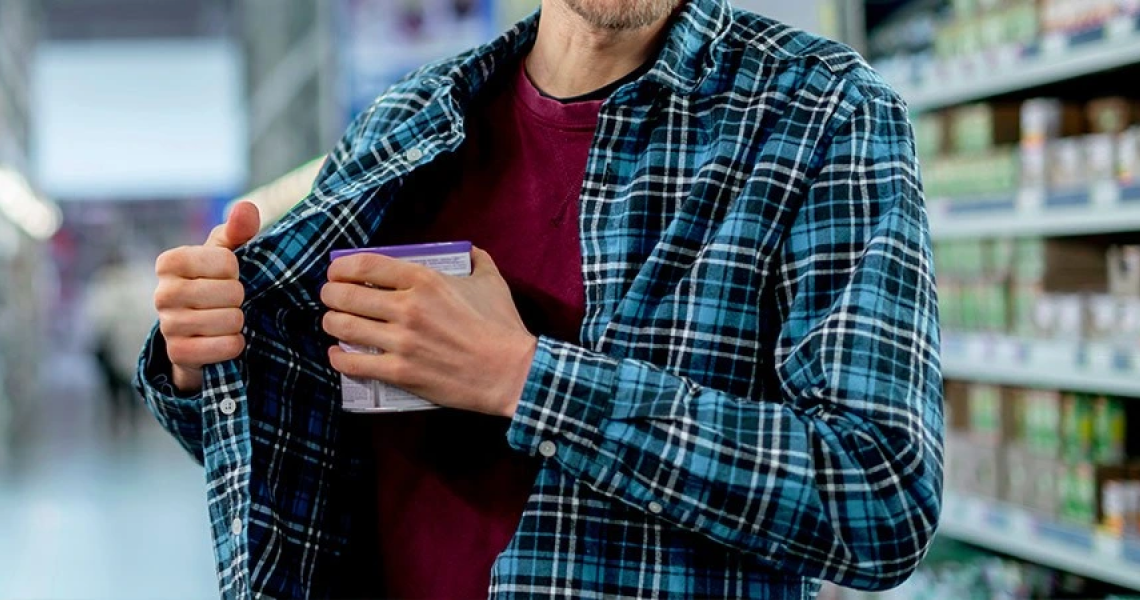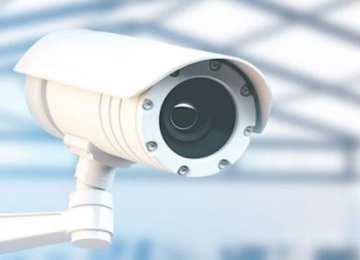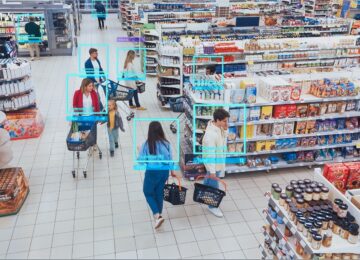Shoplifting incidents: What store teams should know

Shoplifting is a recurrent problem for the retail trade. How should you handle incidents of theft? What are your rights as a retailer when you catch a shoplifter in flagrante delicto? What can be done to prevent it from happening again? At Veesion, we have all the answers for you.
What counts as shoplifting? A clear definition
To ensure you are fully aware of your rights and responsibilities in cases of attempted theft, it’s essential to understand what the law says about shoplifting. It’s always best to be on the right side of the law when handling shoplifting incidents in your store.
Legally speaking, shoplifting is the act of walking out of a store without paying for goods. This means that concealing a product inside a jacket (or switching a price tag) whilst in the store cannot by itself be considered shoplifting. The person has to actually go past the checkout without paying, for it to be considered an act of theft. Your area of action is therefore limited to the area between the checkout and the exit. Under no circumstances can you legally apprehend a person inside the store. Now that’s clear, let’s look at how best to handle a shoplifting incident.
What to do when shoplifting happens in your store
Even if you take every precaution to prevent in-store theft, some crime is inevitable. Here we explain how to handle shoplifters from the moment you notice the theft through to filing a complaint.
Upon detecting a shoplifting incident
You are the store manager, and you have just spotted a shoplifter on the video surveillance monitor. Knowing how to handle shoplifters can make a crucial difference in addressing the situation appropriately. The first thing to do is alert a security guard. That way, the security guard will be able to catch the suspected shoplifter once they have passed through the checkout. Once apprehended, the suspected shoplifter can be asked to empty their pockets and bags. Security officers are also legally permitted to search the person, provided they give their consent.
If you see a shopper attempting to steal a product inside the retail area, try to make eye contact with the ‘suspected thief’. Be insistent, without appearing threatening or aggressive. Remember, the individual may be dangerous. Try engaging in a dialogue with the individual. For example, you can ask them if a particular product is right for them, or if they are looking for something in particular. This will usually deter most thieves because it means they know they have been spotted. Throughout the interaction, adopt an outwardly friendly and polite attitude as expected of a professional. This will help make the person more receptive to your message. Remember that, whilst inside the store, any individual seen slipping a product into their pocket cannot be considered a thief. But once that individual has passed through a security gate or checkout, it’s a different story.
Calling the police (or not)
If the person refuses to return or pay for the stolen item, you have several options: let the person leave with the item, or call the police or gendarmerie.
The first option is mainly preferred in cases of theft of staple goods (or goods of very low value) and where the person appears to be in need. It’s also common to let minors off with a simple warning if they appear to show regret. In any case, you should not resort to threats or insults. Stay calm. Remember you are in control. Avoid any physical confrontation or verbal escalation.
It’s best to call the police in the following cases:
- the individual has already been caught shoplifting in your store before;
- the individual becomes aggressive and denies the theft;
- the individual attempted to steal an item of value.
Some thieves may also manage to flee if they see a security guard coming towards them. In this case, contact the police directly, providing a description of the individual, the direction they were heading in, and where applicable, their means of transport. Any information you can provide is important.
Filing a complaint
File a complaint within 24 hours of the incident. To assist the police investigation as best as possible, it’s important not to leave out any details. If the perpetrator of the alleged theft is known to you, you can file a nominative complaint. Otherwise, the complaint will be filed against X. You will be given a receipt after you have filed the complaint. Although it may be somewhat tedious, filing a complaint is important because it helps to prevent this type of crime in the future.
Shoplifting: what retailers are allowed to do
- Legally, you can ask the person to empty their pockets and show the contents of their bag.
- You can ask a shoplifter to return the goods or to pay the retail price.
- You can retain the person inside your store until the police arrive.
Shoplifting: what retailers are not allowed to do
- You cannot apprehend a suspected shoplifter before they've passed through the checkout.
- You cannot insult or threaten a shoplifter.
- You cannot carry a weapon whilst challenging a suspected shoplifter.
- You cannot, in repair for damages, ask for a higher amount than the retail price of the stolen good(s).
- You cannot search or have the person searched without their consent.
How can you protect yourself against shoplifting?
Knowing how to handle shoplifting when it occurs is good, but knowing how to protect yourself against shoplifting is essential. At Veesion, we have the solutions for this.
Veesion security solutions
Veesion is a high-performance security software that works with Artificial Intelligence technology. It’s compatible with all types of surveillance cameras, which means you don’t have to change any of your existing surveillance equipment to be able to benefit from this innovative technology. Our technology detects theft in real time. It is tailored to the topology of each store, pharmacy or supermarket, etc. With Veesion, you can avoid up to 60% of theft-related losses.
Other precautions to prevent theft
In addition to your surveillance equipment, there are several common-sense precautions you should take to prevent shoplifting:
- Place the cash register(s) in such a way that you have an overview of the whole store.
- Position your employees and colleagues in strategic locations across the store during busy times.
- Check to ensure that the field of view of your surveillance cameras is not obstructed.
- Place expensive goods close to the cash registers, ensuring they are well protected behind a glass display or fitted with anti-theft devices (such as security tags).
- Check to ensure that security gates are operating properly.
- Keep an eye out for suspicious behaviour (such as an unusual gait, constantly glancing around rather than focusing on items, or stress).
- Talk to other shopkeepers and retailers in your area, to exchange experiences and help protect your store from similar shoplifting incidents.
Thanks to these precautions combined with the Veesion surveillance system, you will be able to fight criminals and shoplifting much more effectively.
The most popular
Related news
Discover what Veesion can do for you. Do you have one or more stores?
Our team will contact you within 48 hours





